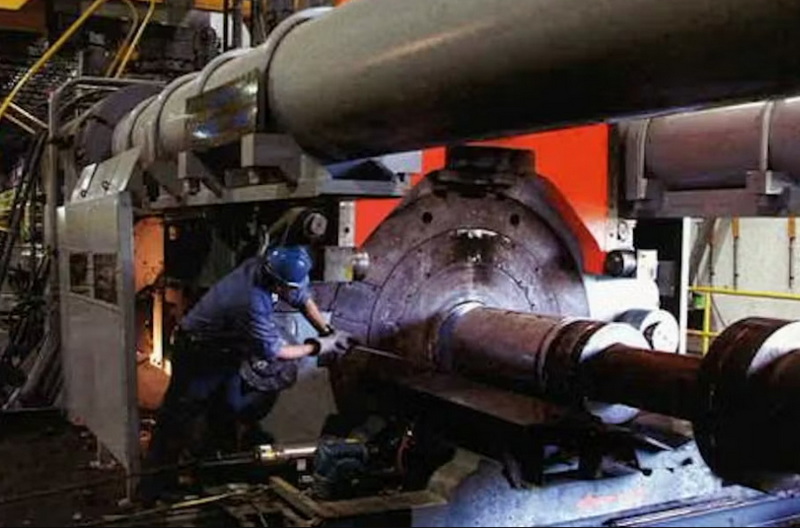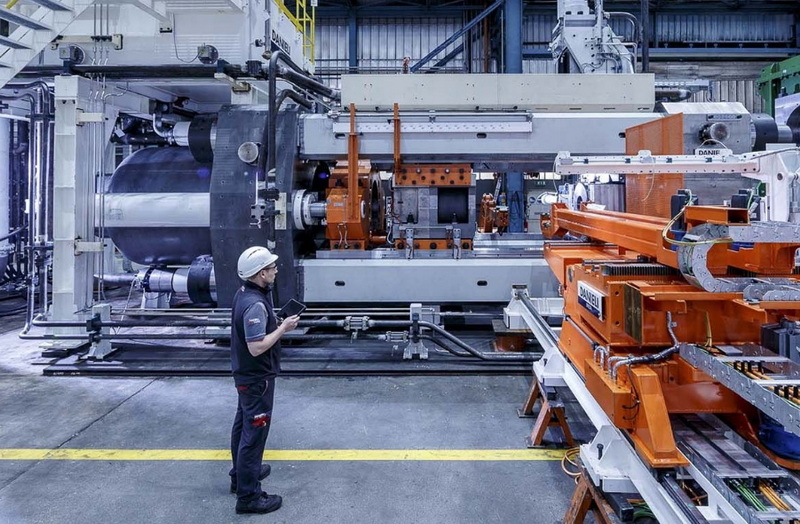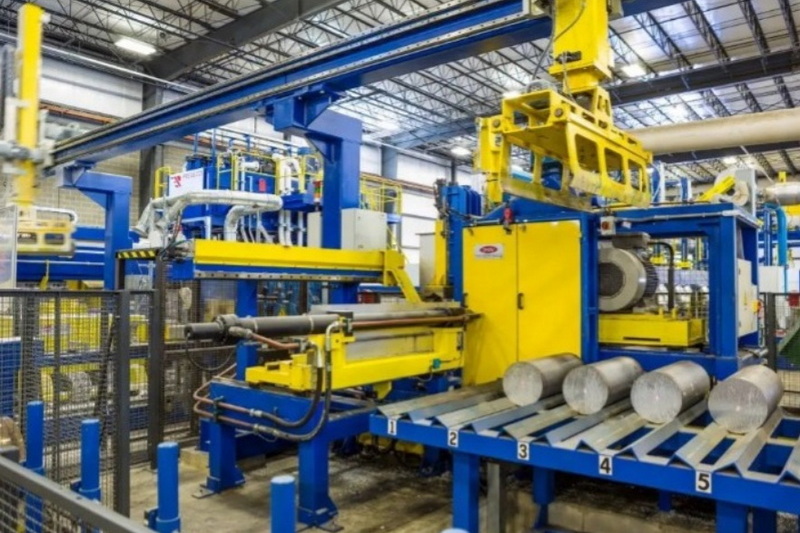Content Menu
● Understanding the Aluminum Extrusion Process
● The Role of Flame Saver Torches in Aluminum Extrusion
>> Key Functions of Flame Saver Torches on Aluminum Extrusion Presses
● Advantages of Using Flame Saver Torches on Aluminum Extrusion Presses
● The Extrusion Process and Flame Saver Torch Usage
>> 1. Pre-Extrusion Setup
>> 2. Billet Preparation
>> 3. Die Preparation
>> 4. During Extrusion
>> 5. Post-Extrusion Processing
● Safety Considerations When Using Flame Saver Torches
● The Future of Flame Saver Torches in Aluminum Extrusion
● Conclusion
● FAQ
>> 1. What is the ideal temperature for aluminum extrusion?
>> 2. How does flame saver torch usage affect the aluminum extrusion process?
>> 3. What safety precautions should be taken when using flame saver torches on aluminum extrusion presses?
>> 4. Can flame saver torches be used on all materials in the aluminum extrusion process?
>> 5. How does the extrusion ratio affect the use of flame saver torches in the aluminum extrusion process?
● Citations:
Aluminum extrusion is a vital process in manufacturing, allowing for the creation of complex shapes and profiles with remarkable precision. However, before an aluminum extrusion press can begin its first run, there's a critical step that often goes unnoticed: the use of a flame saver torch. This article will explore why flame saver torches are crucial for aluminum extrusion presses, delving into the intricacies of the process and its significance in the broader context of aluminum extrusion.[1]

Understanding the Aluminum Extrusion Process
Before we dive into the importance of flame saver torches, let's briefly review the aluminum extrusion process. Aluminum extrusion involves forcing heated aluminum billets through a die to create specific cross-sectional profiles. This process begins with the preparation and preheating of aluminum billets, followed by the extrusion itself, where significant pressure is applied to push the aluminum through a custom-designed die.
The extrusion process can be broken down into several key stages:
1. Preparation of the extrusion die
2. Preparation and preheating of the aluminum billet
3. Loading the billet into a hydraulic extrusion press
4. Applying pressure to force the aluminum through the die
5. Quenching the emerging extrusion
6. Stretching and straightening
7. Heat treatment (aging)
8. Cutting to required lengths
9. Finishing processes[1]
To visualize this process, imagine a powerful hydraulic press setup with dies and ancillary equipment. Once the desired shape for the finished profile has been developed and the appropriate aluminum alloy selected, an extrusion die and associated tooling is produced. In the actual extrusion process, the aluminum billet (a cast "log" of extrusion feedstock) and extrusion tools are preheated. During extrusion, the billet is still solid, but has been softened in a furnace.[2]
The melting point of aluminum is approximately 1,220° Fahrenheit (660° Centigrade). Extrusion operations typically take place with billet heated to temperatures in excess of 700°F (375°C), and (depending upon the alloy being extruded) as high as 930°F (500°C).
The actual extrusion process begins when the press ram starts applying pressure to the billet within a container. Hydraulic presses can exert from 100 to 15,000 tons of pressure; the pressure capacity of a specific press determines how large an extrusion it can produce.
As pressure is applied, the billet is first crushed against the die, becoming shorter and wider until its expansion is restricted by the container walls. Then, as the pressure increases, the soft (but still solid) aluminum has nowhere else to go and begins to squeeze out through the shaped die to emerge on the other side as a fully formed profile.[2]
The Role of Flame Saver Torches in Aluminum Extrusion
Now that we understand the basics of aluminum extrusion, let's focus on the role of flame saver torches in this process. A flame saver torch is a specialized tool used in various industrial applications, including aluminum extrusion presses.
When setting up an aluminum extrusion press for its initial operation, flame saver torches play a vital role in preparing the equipment and ensuring a smooth start to the extrusion process. Before the first run, the extrusion press needs to be properly set up and prepared. This often involves cutting and shaping certain components to fit precisely within the press. Flame saver torches allow for quick and efficient customization of these components, ensuring they fit perfectly and function as intended.[1]
Key Functions of Flame Saver Torches on Aluminum Extrusion Presses
1. Preheating: Temperature control is crucial throughout the aluminum extrusion process. The temperature of the aluminum billet, the extrusion die, and the emerging profile all play critical roles in the success of the extrusion process. Flame saver torches can be used to preheat certain components of the press, ensuring optimal operating temperatures are reached quickly and efficiently.[1]
2. Custom Modifications: Flame saver torches allow for quick and precise cuts, making them ideal for the various tasks required during an aluminum extrusion press first run. This process allows for rapid adjustments and modifications, which is crucial during a first run when time is of the essence. Flame saver torches can be used on a variety of metals and thicknesses, making them versatile tools for the various tasks that may arise during a first run.[1]
3. Emergency Repairs: In the event of unexpected issues during the extrusion process, flame saver torches can be used to make quick repairs or modifications to keep production running smoothly.
4. Die Maintenance: Flame saver torches can be used for maintenance tasks on extrusion dies, such as removing buildup or making minor adjustments. Compared to other cutting methods, flame saver torches are often more cost-effective, especially for the types of tasks typically required during a first run.[1]
Advantages of Using Flame Saver Torches on Aluminum Extrusion Presses
The use of flame saver torches on aluminum extrusion presses offers several significant advantages:
1. Precision: Flame saver torches allow for highly precise cutting and shaping, which is essential when working with the tight tolerances required in aluminum extrusion.
2. Versatility: These torches can be used on a variety of metals and thicknesses, making them versatile tools for the various tasks that may arise during the extrusion process. Flame saver torch equipment is relatively portable, allowing it to be easily moved around the extrusion facility as needed.[1]
3. Speed: Flame saver torches allow for quick adjustments and modifications. This is crucial during a first run when time is of the essence.[1]
4. Cost-effectiveness: Compared to other cutting methods, flame saver torches are often more cost-effective, especially for the types of tasks typically required during a first run.[1]
5. Temperature Control: Flame saver torches can help maintain precise temperature control, which is crucial in aluminum extrusion. During torch cutting, careful attention must be paid to the temperature of the cut material to avoid warping or other undesirable effects. This is particularly important when making adjustments to dies or other precision components.[1]

The Extrusion Process and Flame Saver Torch Usage
Let's take a closer look at how flame saver torches are used throughout the aluminum extrusion process:
1. Pre-Extrusion Setup
Before the extrusion process begins, the heating system is turned on and temperature controllers are set to a low value (for example, 50˚C). After this temperature is reached and stabilized, flame saver torches can be used to preheat specific components of the press, bringing them up to optimal operating temperature more quickly.[7]
2. Billet Preparation
The aluminum extrusion process is initiated by heating the aluminum billets or logs to a temperature ranging from 400-480°C (750-900°F). While this is typically done in a furnace, flame saver torches can be used for spot heating or to maintain temperature if there are any delays in the process.[8]
3. Die Preparation
The die, crafted to exact specifications, shapes the emerging aluminum into the desired profile. Flame saver torches can be used to make last-minute adjustments to the die or to remove any buildup that may have occurred during previous extrusion runs.[8]
4. During Extrusion
As the extrusion process continues, profiles are promptly quenched, rapidly cooling them to temper and set their shape. They are then cooled to room temperature, ensuring structural stability. If any issues arise during this process, flame saver torches can be used for quick repairs or modifications.[8]
5. Post-Extrusion Processing
After emerging, the extrusion is gripped by a puller, which guides it along the runout table at a speed that matches its exit from the press. As it moves along the runout table, the profile is "quenched," or uniformly cooled by a water bath or by fans above the table. If any additional shaping or cutting is required at this stage, flame saver torches can be used.[9]
Safety Considerations When Using Flame Saver Torches
While flame saver torches are invaluable tools in the aluminum extrusion process, it's crucial to use them safely. Here are some key safety considerations:
1. Personal Protective Equipment (PPE): Operators must wear appropriate PPE, including heat-resistant gloves, safety glasses, and flame-resistant clothing.
2. Training: Effective torch cutting requires skill and experience. Operators must be properly trained to ensure precise and safe cuts.
3. Ventilation: Ensure proper ventilation in the work area to prevent the buildup of harmful fumes.
4. Fire Safety: Keep a fire extinguisher nearby and be aware of potential fire hazards in the work area.
5. Material Considerations: While flame saver torches are effective for many metals, they may not be suitable for all materials used in the extrusion process. Alternative cutting methods may be necessary in some cases.[1]
The Future of Flame Saver Torches in Aluminum Extrusion
As technology continues to advance, we can expect to see innovations in both aluminum extrusion and flame saver torch techniques. These advancements may lead to even more efficient and precise first runs for aluminum extrusion presses.
Some potential areas of innovation include:
- Improved automation in torch cutting operations
- Advanced temperature control systems for more precise extrusion
- New alloys that offer improved performance and easier processing
- Enhanced safety features for flame saver torch equipment[1]
Conclusion
Flame saver torches play a crucial role in aluminum extrusion press operations, providing a versatile, efficient, and cost-effective method for making necessary adjustments and modifications. From preparing the extrusion press to creating custom dies and performing emergency repairs, flame saver torches are indispensable tools in ensuring a smooth and successful extrusion process.
As the aluminum extrusion industry continues to evolve, the importance of flame saver torches is likely to remain significant. By understanding the process and its applications, extrusion facilities can optimize their operations and achieve better results from the very first run.[1]
The use of flame saver torches on aluminum extrusion presses exemplifies the intricate balance of precision, efficiency, and innovation that drives modern manufacturing processes. As we look to the future, it's clear that these tools will continue to play a vital role in shaping the aluminum extrusion industry.

FAQ
1. What is the ideal temperature for aluminum extrusion?
The ideal temperature for aluminum extrusion varies depending on the specific alloy being used. Generally, extrusion temperatures range from 700°F to 930°F (375°C to 500°C). For press-quench alloys, typically in the 6000 series, temperatures between 930°F and 980°F (500°C to 525°C) are often required at the die exit to develop optimal mechanical properties.[1]
2. How does flame saver torch usage affect the aluminum extrusion process?
Flame saver torches don't directly affect the extrusion process itself, but they play a crucial role in preparing for the first run. They allow for quick adjustments to equipment, custom die modifications, and emergency repairs, all of which contribute to a smooth and successful first run of the aluminum extrusion press.[1]
3. What safety precautions should be taken when using flame saver torches on aluminum extrusion presses?
Safety is paramount when using flame saver torches. Key precautions include:
- Wearing appropriate personal protective equipment (PPE) including eye protection, heat-resistant gloves, and flame-resistant clothing
- Ensuring proper ventilation in the work area
- Keeping a fire extinguisher nearby
- Properly storing and handling fuel gases and oxygen
- Following all manufacturer guidelines for the flame saver torch equipment[1]
4. Can flame saver torches be used on all materials in the aluminum extrusion process?
While flame saver torches are effective for many metals, they may not be suitable for all materials used in the extrusion process. Alternative cutting methods may be necessary in some cases. It's important to consider the specific properties of the materials being used and consult with experts or manufacturers to determine the most appropriate tools and techniques.[1]
5. How does the extrusion ratio affect the use of flame saver torches in the aluminum extrusion process?
The extrusion ratio, which is the ratio of the initial billet cross-section to the final extruded profile cross-section, can affect the complexity of the extrusion process. Higher extrusion ratios may require more precise temperature control and potentially more frequent adjustments or repairs. In these cases, flame saver torches can be particularly valuable for making quick modifications or repairs to maintain the efficiency of the extrusion process.
Citations:
[1] https://www.yjing-extrusion.com/why-is-torch-cutting-crucial-for-aluminum-extrusion-press-first-runs.html
[2] https://aec.org/aluminum-extrusion-process
[3] https://www.linguee.com/english-chinese/translation/extrusion+coating.html
[4] https://www.reddit.com/r/CatastrophicFailure/comments/v48rnt/extrudedaluminium_factory_jun_22/
[5] https://www.youtube.com/watch?v=iiGlq7408ME
[6] https://app.aws.org/forum/topic_show.pl?tid=30968
[7] https://www.dynisco.com/userfiles/files/Extrusion_Operations.pdf
[8] https://americandouglasmetals.com/2024/05/19/understanding-the-aluminum-extrusion-process/
[9] https://www.gabrian.com/what-is-aluminum-extrusion-process/
[10] https://waykenrm.com/blogs/aluminum-extrusion/






















